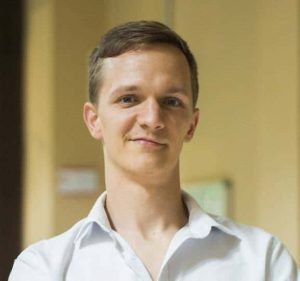Participant
John Poor

John Poor
Washington, D.C.
John Poor is a business development professional and the recipient of a Masters in International Economics & Law from Johns Hopkins University School of Advanced International Studies (SAIS). His research centers around international trade and agriculture, with particular emphasis on supply chain resilience and sustainability.
Currently, John is working with a team of four to found and grow Homni LLC, an international supply chain consultancy with aims to transform agriculture into the leading industry for social, environmental, and economic sustainability.
John lives in Washington D.C. with his former SAIS colleague, Jessup teammate, co-founder of the Law and International Organizations Society, co-funder of the Fund for Education Abroad College Breakout Scholarship, co-rider for the cross-country Cycling for Access project, and fiancé, Sarahann Yeh.
Participated &
Submitted Solutions
Making Transparency Profitable: A Push for Vertically Integrated Supply Chains
By John Poor
Amazon, General Mills, Walmart, Costco, Kroger, Albertsons, and Starbucks. All are spending billions to create hyper-transparent, vertically integrated supply chains that provide predictability, resilience, and agility. These firms are realizing tremendous profits because they can quickly disseminate new technology and process improvements, predict, detect, and react to external shocks, and guarantee internal environmental, labor, and quality standards. Frustratingly, these changes are not expanding to sectors like fruit and vegetables, where imports represent 53% and 31% of U.S. supply, and the firms themselves are undervaluing sustainability considerations. Further, the majority of fruit and vegetables we import, originate on small and medium-sized farms that are isolated within horizontal supply chains.
This means that the families and individuals who operate these farms act alone. Interacting with downstream firms is exceptionally costly, bargaining power limited, risk concentrated, and flexibility low. This likely is why Hiroshima University’s 2019 total factor productivity (TFP) deep dive into the Vietnamese agricultural sector showed a 38% TFP increase among large firms and a 71% TFP decrease among small firms.
Begging the question; Why, if vertical supply chains offer such significant benefits for agriculture, has the global system overwhelmingly operated on a horizontal model?
It’s only within this decade that technology exists to sufficiently reduce transaction costs within supply chains, allowing vertical supply chains to function.
Vertical integration is rapidly expanding in fashion, logistics, manufacturing, retail, and tech because it works, and because unlike agriculture, there are no small-hold microchip manufacturers or aluminum smelters. If the U.S. is going to improve long-term food security, policymakers, business professionals, academics, and subject matter experts must solve three challenges simultaneously. They must determine how to accelerate the adoption of vertically integrated supply chains, how to make it a small-holder inclusive process, and how to prioritize organizational structures capable of delivering social and environmental sustainability goals.
